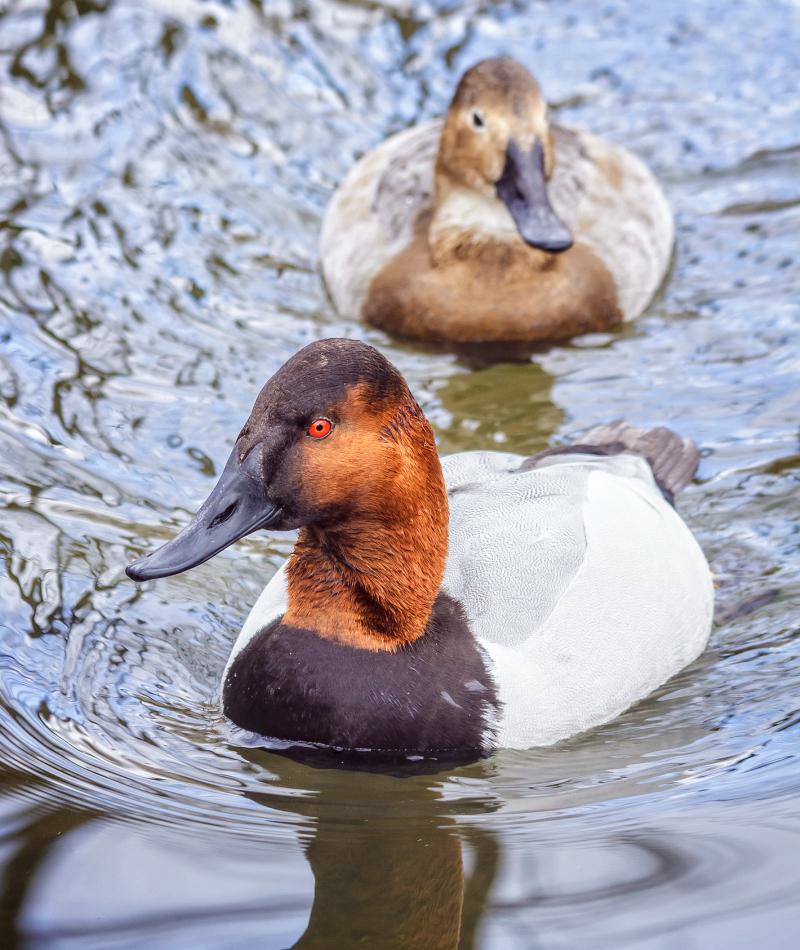
Canvasback
Aythya valisineria
Did you know?
- Canvasbacks are part of the Anatidae family, which they share with other waterbirds.
- Though canvasbacks live primarily in the northwestern portions of North America, they migrate south for the winter.
- They plunge their heads underneath the water in search of plants and small aquatic animals.
- Males attract females by moving their heads back and forth while producing clicking and cooing calls.
- Females typically lay seven to 12 eggs. The young are able to fly about 60 to 70 days after hatching.
Fast Flyers
Though canvasbacks live primarily in the northwestern portions of North America, they migrate south for the winter. These birds are powerful and fast in the air. A flock is capable of flying as fast as 72 miles per hour in its high, V-shaped formation. Their wings make a loud whirring noise as they fly.
Well-dressed Waddlers
It's not hard to recognize a male canvasback, with its copper-colored head, black chest and tail, and white body. The female is a pale version of the male, colored to help her hide as she nests among the marsh reeds.
Threat Level
- Unknown
- Common
- Near Threatened
- Threatened
- Endangered
- Critically Endangered
- Extinct in the Wild
Common
The Canvasback is widespread and abundant.
Range
Northwestern and central North America; winters in Gulf Coast and southern Mexico
Habitat
Marshes, ponds, lakes, rivers, bays

We care about canvasbacks
The Saint Louis Zoo supports canvasbacks at the Cypress Swamp. Learn more about how we are helping wildlife around the world.
Find this animal in Historic Hill

SAINT LOUIS ZOO ZONE
Historic Hill
Historic Hill is a lovely stroll through one of the oldest parts of the Saint Louis Zoo. From the 1904 World’s Fair Flight Cage to the Spanish architectural flavor of the 1920s in the Bird House, Primate House and Herpetarium to the finishing touches of our thoroughly modern exhibits, this area of the Zoo has a unique ambiance and a nostalgic history that make it a great destination.

